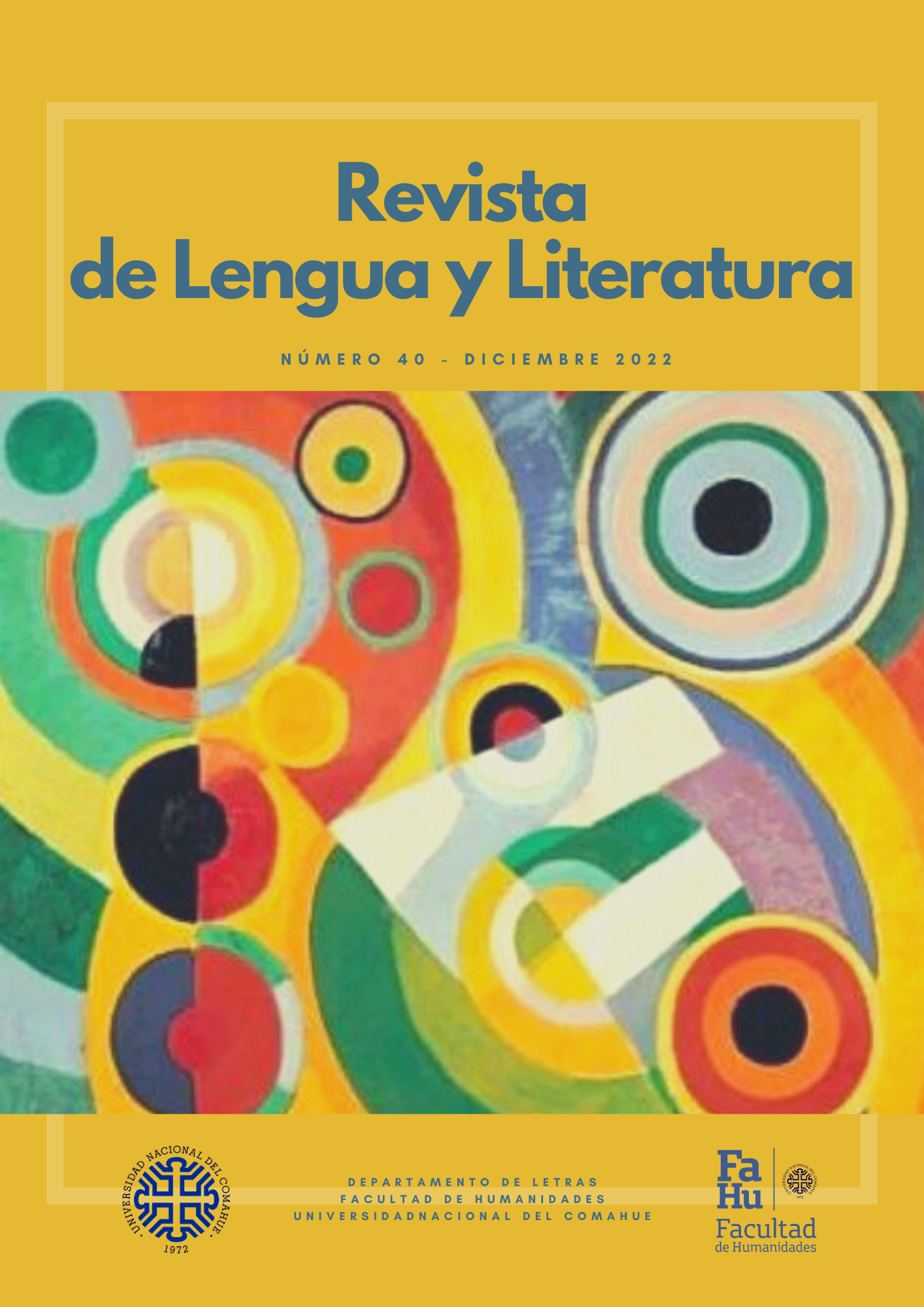talo Calvinomise en abîme: “E io, chi ero?”
Keywords:
Essay, Identification, Self-figurational moment, CalvinoAbstract
In Italo Calvino's work, both in his clearly autobiographical texts and in his fictional ones, a tendency towards self-representation can be observed. But, in addition, the author ofPalomarextendsthis practice to a third type of writing, which is the essay. We believe that he appeals to this last genre to sustain and build his own image as a writer, through the opinion he displays on other authors, who would function as amise en abîmeof his own image. To develop the conjecture raised above, we build the category of 'self-figurational moment' or‘moment of self-figuration’, which is an adaptation and synthesis of the concepts of Paul de Man and José Amícola. The non-fictional writings cover a period from 1955 to 1960, a critical moment for Calvino as far as his own image as a writer is concerned. We will work with a corpus of essays that are notably representative of that period: “La espina dorsal” (1955), written at a timeof crisis as a writer although successful in his work as critic and editor of Einaudi; "Pavese ser y hacer" from 1960, given the key importance that this author had in his formation: and finally we will analyze"El mar de la objetividad", from that same year,which isan essay that preludes his Frenchperiodand where he accentuates his interest in the rational
Downloads
References
Amícola, J. (2007) Autobiografía como autofiguración. Estrategias discursivas del Yo y cuestiones de género. Rosario: Beatriz Viterbo.
Calvino, I. (1995) Punto y aparte. Ensayos sobre literatura y sociedad. Barcelona: Tusquets.
---------------- (2000) Seis propuestas para el último milenio. Madrid: Siruela.
---------------- (2004) Ermitaño en París. Madrid: Siruela.
--------------- (2014) Los libros de los otros. Correspondencias (1947-1981). Madrid: Siruela.
--------------- (2012) Palomar. Madrid: Siruela.
Cattoni, S. “Un ermitaño en París: Ítalo Calvino en Francia”. En AAVV. Estudios argentinos de literatura de habla francesa. Herencia y transmisión. Lealtad y traición. Literatura comparada. (2013). Editorial de FFyH – Córdoba: UNC.
Culler, J. (1984) Sobre la deconstrucción. Madrid: Ediciones Cátedra.
De Man, Paul, (1991), “La autobiografía como desfiguración”, Suplemento Anthropos (29), pp. 113-118.
Guerrini, S. (7 de enero del 2012) Identidad y diferencia [Mensaje en un blog] Recuperado de https://sebastianguerrini.com/esp/identidad-y-diferencia/#:~:text=La%20idea%20de%20la%20identidad,de%20algo%20%C3%BAnico%20e%20inamovible.
Montaigne, M. de (2003) Ensayos de Montaigne (tomo I y tomo II) Recuperado de https://www.cervantesvirtual.com/obra-visor/ensayos-de-montaigne--0/html/
Pollastri, L. y otros (2015). Versificación, figuras y tropos. Neuquén: Universidad Nacional del Comahue.
Pozuelo Yvancos, (2010) Figuraciones del yo en la narrativa: Javier Marías y Vilas Mata, Cátedra Miguel Delibes, Universidad de Valladolid.
Scarpa, D. (1999) Italo Calvino. Milano: Mondadori.
Toriano, E. (2007) Variaciones teóricas y resoluciones estéticas del siglo XX. Italo Calvino. (Tesis doctoral) Universidad Nacional de Cuyo.
Weinberg, L. (2017) El ensayo en diálogo, un diálogo sobre el ensayo. México: UNAM.
Downloads
Published
How to Cite
Issue
Section
License
Copyright (c) 2022 Revista de Lengua y LiteraturaLa aceptación de colaboraciones por parte de la revista implica la cesión no exclusiva de los derechos patrimoniales de los autores a favor del editor, quien permite la reutilización bajo Licencia Atribución-NoComercial-SinDerivadas 2.5 Argentina (CC BY-NC-ND 2.5 AR)
Usted es libre de:
Compartir — copiar y redistribuir el material en cualquier medio o formato
La licenciante no puede revocar estas libertades en tanto usted siga los términos de la licencia
Bajo los siguientes términos:
Atribución — Usted debe dar crédito de manera adecuada, brindar un enlace a la licencia, e indicar si se han realizado cambios. Puede hacerlo en cualquier forma razonable, pero no de forma tal que sugiera que usted o su uso tienen el apoyo de la licenciante.
NoComercial — Usted no puede hacer uso del material con propósitos comerciales.
SinDerivadas — Si remezcla, transforma o crea a partir
El simple hecho de cambiar el formato nunca genera una obra derivada, no podrá distribuir el material modificado.
No hay restricciones adicionales — No puede aplicar términos legales ni medidas tecnológicas que restrinjan legalmente a otras a hacer cualquier uso permitido por la licencia.





